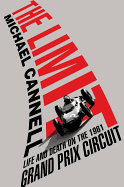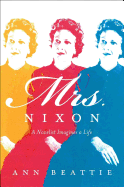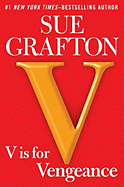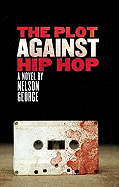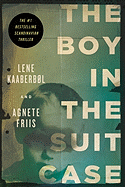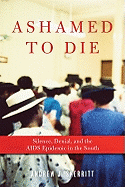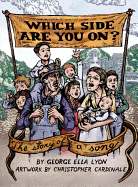Today marks the publication of a book about an amazing person, an amazing couple and their amazing story. 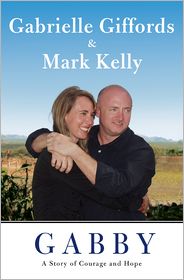
Giffords is, of course, the congresswoman who was shot in January in a strip mall in Arizona, where she was meeting constituents. Astoundingly, with the help of her husband, who was captain of the last mission of the space shuttle Endeavor and has retired from NASA, and a team of doctors and nurses, she can speak, if haltingly, and walk. She's still a long way from leading the life she had--but she keeps progressing beyond expectations. In the book, written with the help of Wall Street Journal columnist Zaslow (co-author of The Last Lecture and Chesley "Sully" Sullenberger's memoir), the couple tell of the fairy tale life they had until this year--and what life has been like since the shooting.
The book was kept under wraps until today--and publicity about it began only last night, when Diane Sawyer interviewed Giffords and Kelly on ABC's 20/20. The public will hear a lot about it now: Kelly is making the rounds of TV and radio shows, including the Daily Show with Jon Stewart, Good Morning America, All Things Considered and On the Record with Greta Van Susteren.
This is a sad but ultimately heartwarming, uplifting tale: the continuing recovery of a vibrant, brilliant woman who survived a point-blank gunshot that should have killed her, helped by a husband who never gave up his belief that she will recover. Giffords wrote the final chapter of the book, consisting of 19 lines, and reads that section on the audio version. "Hope and faith," Gabby Giffords says in words that everyone can acknowledge. "You have to have hope and faith... I will get stronger. I will return."
Mrs. Nixon: A Novelist Imagines a Life
by Ann Beattie
Ann Beattie has a quandary--not a problem, exactly, but a moment of pause. She is fascinated by the life of Pat Nixon, the wife of former U.S. President Richard Nixon, but though her inclination as a writer is to give Pat Nixon life in fiction, Beattie must acknowledge that precisely what makes Mrs. Nixon fascinating is that so much of her real substance--the things that made her "Pat Nixon," as opposed to "the First Lady"--took place outside the public view. The more one tries to pin her down in print, the less substantial she becomes. She is a literary soap bubble: mysterious, prismatic, ephemeral, but untouchable.
Mrs. Nixon: A Novelist Imagines a Life is one part biography, one part novel, and three parts writer's guide, as Beattie negotiates the tightrope between telling Pat Nixon's story and inventing it. Along the way, Beattie discusses what it means to create fictional characters, and explores the questions writers must ask themselves in order to turn a character from a mere placeholder into a substantial (if literary) person--as well as the ethical dilemma a writer faces in turning a historical figure into a literary character. Ultimately, this is a dance each writer must perform with herself as well as her subject: "Mrs. Nixon," writes Beattie, "is a fictional character only to the extent we all are, having both public and private selves." --Dani Alexis Ryskamp, blogger at Intractable Bibliophilia
Discover: A celebrated writer's exploration of the art of creating fictional characters, and the real life that inspired her thoughts.
Mystery & Thriller
V Is for Vengeance
by Sue Grafton
In private investigator Kinsey Milhone's 22nd outing, Sue Grafton brings back all the quirky, lovable characteristics of her protagonist while ramping up the intensity of Kinsey's experiences.
Few authors can open a novel with a gruesome murder and flawlessly transition to her heroine shopping for underwear without losing credibility, but that's precisely the way V Is for Vengeance opens. In Kinsey's world, though, even shopping for underwear can't be easy. She observes a woman shoplifting and notifies a store employee. When the shoplifter is arrested and then apparently commits suicide, Kinsey finds herself investigating the woman's death on behalf of her fiancé. As hidden details of the woman's life are uncovered, Kinsey comes face-to-face with her own mortality and discovers her work on this investigation may very well be a threat to her own life.
Grafton's Alphabet Series is the rare series that continues to show momentum after more than 20 books. V Is for Vengeance is entertaining, while still making your heart race with anticipation. Kinsey Milhone remains a unique protagonist in the PI genre, while Grafton continues to surround her with interesting supporting characters and antagonists. Fans won't be disappointed and newcomers can enjoy the story without any knowledge of the previous 21 books. V Is for Vengeance is another win for this doyenne of the PI novel. --Jen Forbus of Jen's Book Thoughts
Discover: From A to V, Sue Grafton and her fast-food-loving P.I. most assuredly still have their stride.
The Plot Against Hip Hop
by Nelson George
Less a murder mystery than an insider's tour of the hip-hop world, The Plot Against Hip Hop is journalist and documentarian Nelson George's perspective on the scene, filtered through a fictional story "based on long held paranoia about the true history of hip hop."
D Hunter came of age along with East Coast hip hop, and he puts the skills he honed in that scene to use as the owner of a celebrity protection service serving the glitterati of mainstream hip hop. As an eyewitness and then investigator of the murder of his friend and mentor, music critic Dwayne Robinson (a thinly veiled fictional and ironic self-reference by the author?), D comes into contact with the real movers and shakers behind hip hop and rap, finding more truth than he had a right to expect, as a potential conspiracy to monetarily coopt the revolutionary spirit of the nascent music scene unfolds.
D connects with his late mentor's wife, struggles with his own HIV-positive status, and butts heads with police, federal investigators and rebel journalists still trying to get the truth out to a culture more interested in profit and the bottom line than changing a corrupt music system. George's prose sparkles with an effortless humanity, bringing his characters to life in a way that seems true and beautiful. The story--and the conspiracy behind it--is one we all need to hear as consumers and creators in the post-hardcore hip-hop world. --Rob LeFebvre, freelance writer and editor
Discover: This effortlessly human story is steeped in mainstream rap culture, detailing a plausible reason for the "selling out" of hip hop.
The Boy in the Suitcase
by Lene Kaaberbol and Agnete Friis, transl. by Lene Kaaberbol
The opening page offers a glimpse of a naked three-year-old boy, drugged and folded into a suitcase stuffed into a railway baggage locker in Copenhagen. In Lithuania, his mother has been found concussed and drunk at the foot of the stairs at her house--but she's not a drinker, and her panic over the disappearance of her son is very real.
Having transferred funds to his bank to pay for the human cargo, the boy's kidnapper is delayed trying to fly back to Copenhagen. He has no choice but to make an emergency call to a trusted employee who, in turn, phones an old friend to ask for a favor, a favor that involves a locker in a train station.
That old friend is thin, boyish-looking Red Cross nurse Nina Borg, who gets the call shortly before her friend is found murdered in a near-deserted holiday cottage park. Nina is a medical volunteer helping illegal refugees, knowing how merciless Denmark can be for "the broken human lives that wash up on its shores." It's risky work that frequently keeps her away from her own husband and two children.
Here's a thriller that actually thrills, where you care about the characters, and the consequences are dreadful. The grim mystery of what exactly is happening to kidnapped children gets resolved two-thirds of the way through this relentlessly paced book, but that's only the frosting.
Fantasy writer Kaaberbol and children's author Friis reveal new depths of deception and evil as the terrible truth surfaces. Their characters are complex (the kidnapper has given a kidney to try to save his adopted child's life), and their situations always ring true. The multiple plots expertly converge at a sinister house on a cliff in an intense, violent confrontation that brings all the complicated and desperate main characters face to face. The Boy in the Suitcase does it all exactly right. --Nick DiMartino, Nick's Picks, University Book Store, Seattle
Discover: Red Cross nurse Nina Borg risks her life to rescue a kidnapped three-year-old boy in an intense but compassionate thriller.
Biography & Memoir
And So It Goes: Kurt Vonnegut: A Life
by Charles J. Shields
In the introduction to this exhaustively researched biography of author and countercultural hero Kurt Vonnegut, Charles J. Shields admits that writing the book was "like conversing with an empty chair."
That's because Vonnegut died shortly after giving Shields permission to write And So It Goes (the title coming from the famous catchphrase echoing throughout Slaughterhouse-Five). Unprepared for his subject's death, then barred from further access to his records by Vonnegut's family, Shields was left to craft the book from old interviews, letters he was prohibited from quoting directly and a few brief conversations with the man himself. In spite of these limitations, Shields animates the figure in the "empty chair"--and he looks much different from what fans may expect.
Through a sensitive analysis of Vonnegut's privileged but lonely childhood, chaotic personal life and devotion to his work (often at the expense of those close to him), Shields reveals a man quite at odds with the cherished image of the wistful humanist who wrote himself into his novels and extolled a simple philosophy best explained by the famous line, "God damn it, babies, you've got to be kind."
If Shields's presentation of Vonnegut is a little disenchanting, it is still sympathetic at heart. He never suggests Vonnegut's reality compromised the integrity of his fiction, instead showing us a complicated, conflicted man who "made choices, consciously or unconsciously, that had created multiple and contradicting identities." Vonnegut was, in Shields's portrait, a "hero, a guru, and a leftist to his fans; a wealthy investor to his broker; a champion of family and community, and yet a distant father; a satirist of American life, but feeding at the trough of celebrity."
This may be an apt place to sigh, "And so it goes." --Hannah Calkins, blogger at Unpunished Vice
Discover: The only authorized biography of Kurt Vonnegut reveals him to be far more enigmatic and complex than his fiction would lead you to believe.
History
The Beauty and the Sorrow: An Intimate History of the First World War
by Peter Englund, transl. by Peter Graves
Instead of yet another book discussing what happened in the First World War and why, Swedish historian and war correspondent Peter Englund has written "about what it was like." The Beauty and the Sorrow follows 20 individuals through the course of the war: male and female, combatants and non-combatants, none of them "important" in the traditional historical sense, and most of them far from the well-known mud and trenches of the western front. The youngest is a 12-year-old German schoolgirl; the oldest a fragile 50-something Scotswoman who goes to the front as an aide worker. The most unlikely are a Canadian opera singer married to a Polish count and a Venezuelan adventurer who joins the Ottoman army after several of the Allied powers reject him.
Englund casts his narrative in the present tense, giving it unusual immediacy, and relies heavily on the letters and journals of his subjects. They are all remarkably articulate and thoughtful, even the 12-year-old. Much of what he presents lies outside the scope of other works on the war, and even familiar facts are presented with new twists.
Fast-paced and thought-provoking, The Beauty and the Sorrow is a truly extraordinary history of the First World War that deserves a place beside such classics as Barbara Tuchman's The Guns of August, Paul Fussell's The Great War and Modern Memory and Robert Graves's Good-bye to All That. --Pamela Toler, blogging at History in the Margins
Discover: What the First World War was like, told through the daily experiences of men and women "on the street."
Political Science
China in Ten Words
by Hua Yu and Yu Hua, transl. by Allan H. Barr
Words have the power to define life or death, freedom or tyranny, wealth or abject poverty. In Chinese history, "revolution" is the one word that has held sway over political ideology and cultural expression for the last half-century. But novelist Yu Hua (To Live; Brothers), also sees in the repressive tyranny of the Cultural Revolution a change in the subtle meanings of eight other words--and the reputation of the Chinese writer Lu Xun--all of which he explores in China in Ten Words.
Through the eyes of a youthful Yu Hua, we see how charismatic "leader" Mao Zedong spawned a revolution and united a "people" around the principle of wealth redistribution. But this "revolution" also changed how "reading" (through censorship) and "writing" (through simplified Chinese characters) were conducted, a consequence of a political philosophy centered on one figure. Decades later, violence, repression and economic "disparity" engendered a mentality focused on extreme capitalism, one where piracy and "copycats" emerged in a Darwinian quest for power and dominance by whatever means possible (hence, "bamboozle" becomes a term of endearment). Not even the standoff at Tiananmen Square could quash the seductive lure of the nouveau riche, leaving the question of morality and values open. "When society undergoes a drastic shift," Yu Hua writes, "an extremely repressed era soon becomes a very lax one."
Ten Words is a witty, wise and unflinching commentary on China's political past and crash course future. Its intimacy and immediacy should cement Yu Hua's legacy in Chinese literary circles as a master storyteller and documentarian. --Nancy Powell, freelance writer and technical consultant
Discover: The revolutionary past and capitalist future of the world's most populous (and frequently) misunderstood nation, as seen through 10 words.
The Odd Clauses: Understanding the Constitution Through Ten of its Most Curious Provisions
by Jay Wexler
Most American citizens know at least enough about the Constitution and the Bill of Rights to namecheck their freedoms of speech, religion and privacy. Less well-known, however, are provisions allowing letters of marque and reprisal and forbidding bills of attainer. It's their very unfamiliarity, though, that makes these clauses the perfect entry point for lessons about the founding document of the U.S. government, because while plenty of folks have strong feelings about gun control, no one much cares about privateering. That's the thinking behind Odd Clauses, Boston University law professor and former Supreme Court clerk Jay Wexler's follow-up to Holy Hullabaloos: A Road Trip to the Battlegrounds of the Church/State Wars.
Considering the seriousness of the subject matter, Odd Clauses is surprisingly goofy and quite funny. For example: he uses the (factual!) example of a Scottish penguin knighted by the Norwegian King's Guard to illustrate the nobility clause. Another recurring joke involves Justice Scalia biting his gavel in half out of pure originalist rage. This is silly stuff, but Wexler's jokes serve a purpose, keeping the reader engaged with even the most arcane topics. For example, he uses the weights and measures clause to illustrate legislative powers: Congress has passed the buck on the metric system for decades, even appointing a committee to make recommendations it ignored. But responsibility for our wacky system still lies with Congress. Wexler's strong legal chops, combined with his experience writing humor pieces for places like McSweeney's and Spy, qualify him to crack wise while shedding light on this and other examples of what he refers to as the Constitution's "bat-eared foxes." --Kelly Faircloth, freelance writer
Discover: An unconventional take on the U.S. Constitution that deftly balances humor with education.
Social Science
Ashamed to Die: Silence, Denial, and the AIDS Epidemic in the South
by Andrew J. Skerritt
Thirty years after the identification of the first cases of acquired immune deficiency syndrome (AIDS)--caused by the human immunodeficiency virus (HIV)--medical breakthroughs in diagnosis and treatment have changed the course of this disease. For many patients, the infection can be suppressed enough through medication to allow a normal life expectancy. Yet there are regions of the United States that continue to struggle with the devastating consequences of unchecked and untreated HIV/AIDS, and Andrew J. Skerritt reports on the situation in one Southern community in Ashamed to Die.
Skerritt interviews patients, their families and friends, and health-care providers in a small town in South Carolina whose lives have been touched by HIV/AIDS. Through detailed personal portraits, intermixed with startling statistics, Skerritt exposes the difficulties the South's rural black population has faced in dealing with the disease. Inherent poverty, social inequality and scarcity of resources are already public health issues in many communities; add a cultural hesitancy to talk openly about HIV/AIDS and the behaviors that contribute to its transmission (drug addiction, promiscuity, prostitution), and the morbidity and mortality of the disease are magnified. Skerritt poignantly reminds us that shame does not lie with the dying patients, but rather with those who fail to acknowledge the AIDS problem or offer assistance in its prevention and treatment. --Roni K. Devlin, owner, Literary Life Bookstore & More
Discover: A detailed and intimate look at the impact of the HIV/AIDS epidemic in the American South.
Sports
The Limit: Life and Death on the 1961 Grand Prix Circuit
by Michael Cannell
Though auto racing remains a dangerous sport--witness last month's fatal crash by Indy winner Dan Wheldon--today's seat-belted and helmeted races seem sane and cautious compared to the breakneck carnage of the sport's postwar European years, a time when the fatalities sometimes included multiple spectators as torn car bodies became deadly projectiles. Given the subject matter, it's no surprise that this chronicle of the tragic 1961 Grand Prix circuit is thrilling. But Michael Cannell doesn't just rev up the exuberant prose his subject deserves; he also digs into the neurotic and outsized personalities of the drivers. The Limit is an obvious must-read for motorheads, but even those with no interest in auto racing will be entranced by the passionate account of these amazing men and their crazy lives.
While mild-mannered Californian Phil Hill is ostensibly Cannell's main focus, the other drivers who move in and out of Hill's path prove to be just as compelling. There is Wolfgang Von Trips, the reckless German aristocrat nicknamed "Count Von Crash"; Enzo Ferrari, the intimidating and mercurial patriarch of the Ferrari brand; and the debonair Stirling Moss, who once reportedly heard from a police officer who pulled him over for speeding: "Who do you think you are, Stirling Moss?"
Though there is an overhanging solemnity for the lives lost in The Limit, Cannell lets the reader linger in the temperate Mediterranean climate, recounting the Riviera-chic parties and Bardot-era beauties that marked time between the white-knuckled death matches these drivers called work. The mesmerizing story whizzes by, leaving readers with a sense of wonder at heroic foolishness as well as a ringing in the ears. --Cherie Ann Parker, freelance journalist and book critic
Discover: A riveting character study set amid the screams and roar of the European Grand Prix circuit.
Children's & Young Adult
Which Side Are You On?: The Story of a Song
by George Ella Lyon, illus. by Christopher Cardinale
George Ella Lyon (All the Water in the World) and Christopher Cardinale (Mister Mendoza's Paintbrush) make a perfect match for this picture-book homage to a 1931 rallying cry.
Cardinale opens with a breathtaking view of the eastern Kentucky mountains before plumbing the depths of the coal mines below. "My Pa is a miner," the girl narrator begins. "Earns our dinner deep in the mountain blasting and loading coal." Pa sits at the head of a table of nine that passes plates of food. No one goes hungry. Yet the narrator and her siblings "live in a coal company house on coal company land," and Pa gets paid in scrip, which has value only at the company store.
Lyon and Cardinale contextualize the terms so that a young audience can understand ideas such as "scrip," "strike" and "scab," as the coal miners take a stand. They also do not shy away from the violence unleashed on the narrator's family. Pa is Sam Reese, a union organizer, and the company men would like to put an end to his organizing. As the sheriff and his gang shoot through the walls, the children hide under the bed, and Ma--Florence Reese--using a page from the calendar, composes the lyrics to the song, "Which Side Are You On?" Lyon maintains a child's point of view. As Ma sings her song, her children ask the questions that readers will have in mind, such as "Why don't the sheriff stop them?"
Although this book describes a historical event, it can open a gateway to understanding terms such as "collective bargaining," what that right has meant, and to consider what it means today. --Jennifer M. Brown, children's editor, Shelf Awareness
Discover: The story behind the 1931 song "Which Side Are You On?", which has been recorded by Pete Seeger and Natalie Merchant, among others.
Amplified
by Tara Kelly
Tara Kelly (Harmonic Feedback) creates a captivating world full of music, passion and self-discovery in her latest novel. Kicked out of her house because her devotion to music prompts her decision to delay college enrollment, Jasmine finds herself in Santa Cruz with nowhere to stay and a broken-down car. After a shaky jam session ("The contrasting melodies in the song somehow blurred into nothing but noise in my head") that turns favorable ("I backed her up with a dreamy arpeggio, coloring in a flange effect"), Jasmine moves in with the C-Side band hiding a secret: she has never played on stage before (and might have feelings for their bassist).
As we learn more about the band and Jasmine's relationships, it's clear that the author has shaped beautifully authentic characters. The role of each member in the group is well defined and true to what a genuine band might experience. Jasmine's relationships with Sean, the bassist, and his sister, Veta, the only other female in the band, are the most interesting to follow as the heroine figures out her role.
Kelly's knowledge of music is apparent as she flawlessly weaves its vocabulary into the story. Readers unfamiliar with the guitar will still feel the meaning behind the riffs and chords Jasmine plays, and a true musician will appreciate the expertise of the language. Amplified follows a passionate musician through a life-changing adventure. --Shanyn Day, Chick Loves Lit
Discover: A musician's journey to follow her calling, with realistic characters and well-developed relationships.


